How to Use Moving Straps like a pro: The Ultimate Guide
December 20, 2023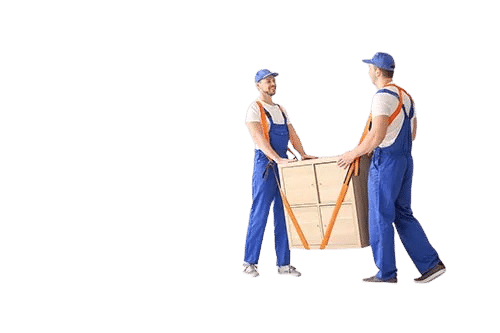
Moving straps heavy items can be a daunting task, but with the right tools and techniques, it can become much easier and safer. One such tool that can make a significant difference is this.
Moving straps simplify the process of lifting and moving heavy objects. They can be used for DIY moves or for rearranging furniture at home. In this comprehensive guide, we will walk you through everything you need to know about how to use moving straps effectively and safely.
Also known as furniture lifting straps, are specialized tools that leverage the principle of leverage to distribute the weight of heavy objects and reduce strain on your body. These straps are typically made of durable nylon material and are designed to be worn either on your shoulders or forearms, depending on the type of moving straps you choose.
Two main types of moving straps exist shoulder straps and forearm straps. Shoulder straps consist of a harness that fits over your shoulders and a detachable lifting strap. They evenly distribute weight on your shoulders, so you can lift heavier things.
On the other hand, forearm straps have loops on each end that you slip your forearms into. These straps are ideal for maneuvering smaller and lighter items, such as mattresses or chaise lounges.
Can be used in various situations where you need to lift and transport heavy objects. However, they are particularly useful when navigating stairs or tight spaces where traditional moving equipment like dollies may not be practical. The best moving straps can help you maintain control and balance while reducing the risk of injury.
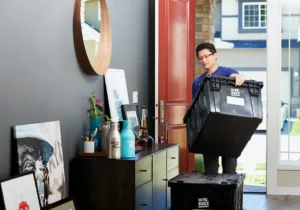
Using moving straps offers several benefits, including:
To ensure you use the straps effectively and safely, follow these essential tips:
Before using your moving straps, it’s crucial to read and understand the instructions that come with them. Each brand may have specific guidelines and recommendations for proper usage, so familiarize yourself with the instructions to avoid any potential injuries.
Before attempting to lift any heavy objects with moving straps, clear the pathway from your starting point to your destination. Remove any obstacles, such as rugs or toys, that could pose a tripping hazard. Additionally, measure doorways, hallways, and staircases to ensure the item you’re moving will fit through without any issues.
Wearing appropriate clothing and footwear is essential when using moving straps. Opt for sturdy, non-slip shoes to maintain grip and balance while lifting. Avoid open-toed shoes or high heels, as they can increase the risk of accidents. Additionally, wear comfortable and non-constricting clothing to ensure freedom of movement.
Typically requires two people. Find a reliable moving partner who can assist you in lifting and maneuvering heavy objects. Working as a team will ensure better control and reduce the risk of accidents.
Depending on the type of moving straps you have, determine the appropriate placement for optimal lifting. Shoulder straps should be positioned over your shoulders, with the lifting strap centered in front of your body. Forearm straps should be positioned around your forearms, with the lifting loops securely fastened.
To prepare the object for lifting, place the straps on the ground in front of the item. With your partner’s help, tilt the object back gently to create enough space to slide the straps underneath. Ensure that the straps are centred and properly aligned with the object.
When lifting the object using straps, it’s crucial to use proper lifting techniques to prevent injuries. Bend your knees, keep your back straight, and lift with your legs rather than your back. Coordinate with your partner to lift the object simultaneously and maintain clear communication throughout the lifting process.
Once you have lifted the object using the moving straps, move slowly and carefully to your desired destination. Take small steps and communicate with your partner to ensure synchronized movement. If either of you needs a break or adjustment, lower the object safely and resume when ready.
When you reach your destination, lower the object slowly and with control. Bend your knees and keep your back straight to reduce the risk of strain or injury. Remove the straps carefully once the object is safely on the ground.
Yes, moving straps can significantly assist in lifting and moving heavy objects when used correctly. They help distribute the weight, reducing strain on your body and making the process more manageable.
Some moving straps are designed for one-person use, while others require two people. Check the specifications of your specific set of moving straps to determine if they can be used individually.
Moving straps can be used for a wide range of heavy objects, including bookcases, couches, desks, tables, and more. They are versatile tools that can make the moving process easier and more efficient.
The weight capacity of moving straps can vary depending on the specific style, model, and brand. Generally, can support anywhere from 400 to 650 pounds, but it’s essential to check the manufacturer’s guidelines for the specific straps you are using.
Moving cost straps are widely available for purchase at home improvement stores, such as Lowe’s and The Home Depot. You can also find them online through various retailers.
Using moving straps can make a significant difference in the ease and safety of lifting and moving heavy objects. By following the tips and techniques outlined in this guide, you can effectively use to reduce strain on your body and prevent injuries. Remember to always prioritize safety, communicate with your moving partner, and use proper lifting techniques. With the help of straps, your next move or furniture moving straps rearrangement project will be a breeze.
Moving is an exciting yet challenging venture, and when it comes to your valuable TV, ensuring its safety is paramount. In this guide, we’ll explore the art of choosing the right moving boxes for TV security. From where to find TV moving boxes to the importance of secure packaging, we’ll cover it all.
Moving, especially delicate items like a TV, can be a complex task. While we delve into the specifics of choosing the right moving boxes, it’s essential to recognize the value of hiring professionals. Moving providers like Two Men and a Truck, PODS, and College Hunks Moving Company offer expertise and resources to ensure a seamless and secure relocation.
When embarking on a move, one of the initial concerns is acquiring the right materials, especially for delicate items like your TV. Fortunately, there are various sources for TV moving boxes to consider:
Properly boxing your TV is crucial to prevent damage during transportation. Follow these steps on how to box a TV for moving:
The answer is a resounding yes! Investing in a dedicated moving box for your TV is a crucial step in ensuring its security during transit. A proper TV box provides structural support, reducethe risk of damage from bumps and jostles on local or interstate moves.
Keeping the original box for your TV is advantageous. If you still have it, the manufacturer-designed packaging offers an ideal fit, providing maximum protection. However, if the original box is unavailable, acquiring a purpose-built TV moving box is the next best option.
Choosing the right moving boxes for TV security involves careful consideration of size, material, and reinforcement. Whether you opt for a dedicated TV box or the original manufacturer’s packaging, prioritizing secure packaging is key. Additionally, recognizing the importance of the best interstate moving services, such as Two Men and a Truck, PODS, and College Hunks Moving Company, can further enhance the safety of your TV during transit.
By following the outlined steps and considerations, you can embark on your move with confidence, knowing that your TV is well-protected and ready for its new home.
Moving to a new home is an exciting yet daunting task. Once the hustle and bustle of the interstate move is over, it’s time to settle in and make your new house feel like home. Unpacking and organizing can be overwhelming, but with a well-thought-out plan and some strategic steps, you can turn chaos into order effortlessly. In this guide, we’ll explore practical tips and tricks on how to organize your new home post-move, ensuring a smooth transition and a comfortable living space for you and your family.
Moving is a process that requires careful planning. Before the moving day, create a timeline outlining the tasks you need to accomplish. This can include tasks such as packing, hiring a moving company, notifying utility services, and researching the new neighborhood. By breaking down the tasks into manageable chunks, you can stay organized and reduce the stress associated with moving.
When packing your belongings, label each box according to its contents and the room it belongs to. This makes it easier to identify what’s inside without having to open every box. Additionally, pack essential items separately and keep them handy for the first few days in your new home.
Start unpacking room by room. Begin with the essentials, such as kitchen items, toiletries, and bedding. As you unpack, prioritize the items you use daily. Avoid rushing through the process; take your time to organize each room thoughtfully.
Consider the layout of your new home and decide on the placement of furniture accordingly. Visualize the flow of each room and arrange furniture to optimize space and enhance functionality. Don’t hesitate to experiment with different arrangements until you find what works best for your lifestyle.
Invest in storage solutions that maximize space utilization. Utilize vertical space with shelves and cabinets. You can also consider multifunctional furniture pieces that offer storage options, such as ottomans with hidden compartments or bed frames with drawers.
Adding personal touches to your new home can make it feel warm and inviting. Decorate with items that hold sentimental value or bring you joy. Hang artwork, display family photos, and incorporate decorative elements that reflect your style and personality.
Settle into your new home by establishing daily routines. Familiarize yourself with the local area, find nearby grocery stores, schools, and healthcare facilities. Creating a sense of routine can help you adapt to your new surroundings more quickly.
Maintaining an organized home requires regular cleaning and decluttering. Make it a habit to clean up after yourself and encourage your family members to do the same. Regularly assess your belongings and donate or discard items you no longer need.
In today’s digital age, organizing your home extends to your online life as well. Keep your digital files, emails, and online accounts well-organized. Use cloud storage solutions to store important documents and create folders to categorize your digital files efficiently.
Moving to a new home is undoubtedly a significant life event, and organizing your space effectively can make the transition smoother and more enjoyable. By planning ahead, packing and unpacking strategically, designing your space efficiently, personalizing your new home, and maintaining an organized lifestyle, you can create a comfortable and harmonious living environment for you and your family.
Remember, the key to a successful move lies in being prepared and staying organized throughout the process. With the right mindset and these practical tips, you can turn your new house into a home that truly reflects your personality and style.
For more expert advice on moving and organizing your new home, visit WowMover today!
United States has experienced significant changes, and one area where the impact is felt profoundly is in the cost of moving. Whether you are planning an interstate move, looking for storage options, or simply trying to find the best deals on moving materials, the effects of inflation have created ripples that touch every aspect of the moving process. In this article, we will delve into the ways inflation has influenced moving costs and explore practical solutions for individuals and families navigating these challenges.
Inflation, the steady increase in general price levels, has become an integral part of the American economic story. The impact of inflation is far-reaching, affecting everything from groceries to housing, and of course, moving costs. As inflation rates soar, the expenses associated with moving, both locally and across state lines, have witnessed a notable uptick. This trend is particularly evident when considering interstate moving, where costs are influenced by fuel prices, labor expenses, and demand-supply dynamics.
Intestate moving, the process of relocating from one state to another, has become notably more expensive due to inflation. Fuel costs, a significant component of interstate moving expenses, have seen a sharp increase, directly affecting the overall cost of transporting goods over long distances. Additionally, labor costs have surged, reflecting the broader economic shifts in the job market. These factors, coupled with the rising costs of maintaining a moving vehicle fleet, have led to higher prices for interstate moving services.
One innovative solution that has gained popularity amidst rising storage moving costs is the utilization of moving pods. These portable storage units offer flexibility and convenience, allowing individuals to store their belongings securely without breaking the bank. Companies like PODS have revolutionized the storage and moving industry, offering cost-effective alternatives for those seeking storage solutions in an inflation-driven economy.
When facing escalating storage moving costs, it’s essential to explore budget-friendly options. Moving pods not only provide a more economical choice but also offer the convenience of on-demand storage. By opting for moving pods, individuals can store their belongings for a specific duration, mitigating the financial strain caused by inflation. Moreover, the accessibility and security offered by these units make them a practical choice for those in need of storage solutions during a move.
One often overlooked aspect of moving expenses is the cost of materials. From boxes to packing tape, these essentials can add up quickly, especially with inflation driving prices higher. To counter this, savvy movers are turning to cost-effective solutions such as buying moving boxes in bulk. Online marketplaces and specialty retailers offer competitive prices, allowing individuals to acquire the necessary materials without overspending. By planning ahead and sourcing moving materials strategically, movers can significantly reduce their overall expenses.
In the realm of moving, timing can make a substantial difference in costs. As inflation continues to impact the economy, choosing the right month for your move can result in significant savings. Historically, the moving industry experiences fluctuations in demand throughout the year. Understanding these patterns can empower individuals to make informed decisions. Moving during the off-peak season, often in the winter months, can yield substantial cost savings. By avoiding the peak summer season, characterized by high demand and consequently inflated prices, movers can stretch their budget further.
In conclusion, the effects of inflation on moving costs are undeniable. From interstate moving to storage solutions, every aspect of the moving process is influenced by the economic shifts in the country. However, armed with knowledge and strategic planning, individuals and families can navigate these challenges effectively.
Utilizing innovative storage solutions like moving pods, sourcing materials wisely, and choosing the optimal time for the move are practical strategies that can make a substantial difference. By adapting to the changing economic landscape and exploring budget-friendly alternatives, movers can ensure a smooth transition without breaking the bank.
Remember, staying informed, exploring innovative options, and planning ahead are the keys to managing moving costs in an inflationary environment. By making smart choices and leveraging available resources, individuals can successfully move to their new homes while keeping expenses in check.
For more insights into managing moving quotes, costs and navigating the complexities of relocation, visit WowMover. Explore their comprehensive guides and expert tips to make your move a seamless and affordable experience.
Moving is a journey—a transition from one chapter of your life to the next. It’s an exciting adventure, but it comes with its fair share of challenges. One of the crucial aspects of any move is ensuring your belongings are packed securely and safely. At WowMover, we understand the importance of reliable moving materials. In this comprehensive guide, we’ll explore everything you need to know about buying moving boxes and other moving materials to make your transition smooth and stress-free.
Moving boxes are the unsung heroes of relocation. They come in various shapes and sizes, each designed for specific items. Whether you need small boxes for fragile items or large ones for bulky belongings, the diverse range of moving boxes caters to all your packing needs.
WowMover’s Moving Boxes:
Moving isn’t just about boxes; it’s about having the right materials to secure your possessions. From bubble wrap and packing paper to tape and markers, the moving materials is curated to ensure your items are well-protected during transit.
WowMover’s Moving Materials:
Moving is not just about the physical process but also about the strategy you employ. Here are some expert tips to ensure your move, especially interstate moving and storage, is seamless and stress-free:
“Moving is an art of meticulous planning. Start early and create a detailed moving checklist. This will help you stay organized and reduce last-minute chaos.” – WowMover Team
2. Hire a Reputable Interstate Moving and Storage Company
“When it comes to interstate moving and storage, choosing the right company is paramount. Look for experience, customer reviews, and transparent pricing. Our guide on comparing moving companies can help you make an informed decision.” – WowMover Team
3. Pack Fragile Items with Care
“Fragile items require special attention. Use plenty of bubble wrap, packing paper, and sturdy boxes. Don’t forget to label them as ‘Fragile’ for the movers to handle them with care. Read our guide on how to pack fragile items for expert tips.” – WowMover Team
4. Estimate Your Interstate Moving Costs
“Understanding the costs involved in interstate moving is essential for budgeting. Our article on the average interstate moving costs provides valuable insights to help you plan your budget effectively.” – WowMover Team
At WowMover, we don’t just sell moving boxes and materials; we provide you with the tools and knowledge to embark on your moving journey with confidence. Our curated collections are designed to meet the diverse needs of every move, ensuring your belongings reach their destination safe and sound.
Ready to make your move? For more expert advice on interstate moving and storage, visit our articles on hiring interstate moving companies and long-distance moving.
Moving from one place to another can be an exciting adventure, and if often helpful to have temporary storage between moves. When you are relocating, you have to deal with a lot of things, such as packing, hiring a moving company, and finding temporary storage for your belongings.
Temporary storage can be a lifesaver when you are moving, but it can also be a headache if you don’t know what to expect. In this article, we will provide you with the ultimate guide to temporary storage between moves.
Temporary storage can be a lifesaver when you are moving. It provides you with a safe place to keep your belongings while you figure out your next move. There are many reasons why you might need temporary storage between moves, such as:

When it comes to temporary storage, there are several options available. Each type of storage has its advantages and disadvantages, so it’s important to choose the one that works best for your needs. Check here with you ZIP code for the best options available near you.
Self-storage units are the most common type of temporary storage. These units are typically located in commercial buildings and are rented out on a monthly basis. Self-storage units come in a variety of sizes, so you can choose one that fits your needs. They are also usually climate-controlled, which means that your belongings will be protected from extreme temperatures and humidity.
Portable storage containers are another option for temporary storage. These containers are delivered to your home, and you can pack your belongings at your own pace. Once you are finished packing, the company will pick up the container and store it until you are ready to move. Portable storage containers are convenient because you don’t have to transport your belongings to a storage facility.
Warehouse storage is a good option if you have a large number of items that need to be stored. This type of storage is usually used by businesses, but it can also be used by individuals. Warehouse storage is usually less expensive than self-storage units, but it’s not as convenient because you have to transport your belongings to the warehouse.
Storage lockers are small storage units that are usually used for storing items such as sports equipment, holiday decorations, and clothing. These lockers are often located in commercial buildings, such as malls and office buildings.
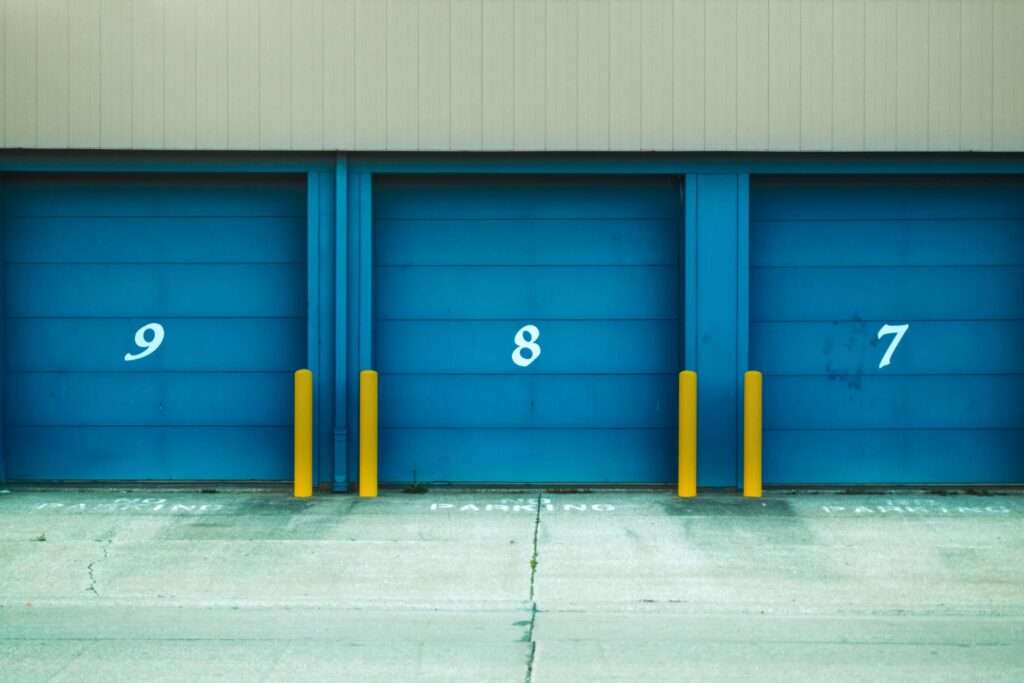
Also Read: What is Short Term Or Temporary Storage?
When choosing a temporary storage option, there are several factors to consider, such as:
It’s important to choose a storage option that fits your needs and budget. You don’t want to spend more than needed.
When packing for temporary storage, it’s important to keep a few things in mind. First, you want to make sure that your belongings are packed securely, so they don’t get damaged during transport or while in storage. Second, you want to make sure that your belongings are easy to access if you need to get something out of storage.
Here are some tips for packing for temporary storage:
The cost of temporary storage depends on several factors, such as the type of storage, the size of the unit or container, and the length of time you need to store your belongings. Self-storage units can cost anywhere from $50 to $300 per month, while portable storage containers can cost anywhere from $100 to $500 per month.
The length of time you can store your belongings in temporary storage varies depending on the storage company. Some companies allow you to store your belongings for as little as one month, while others allow you to store them for several months or even years.
If you need to access your belongings in temporary storage, you can usually do so during regular business hours. Some storage companies may require you to make an appointment to access your belongings.
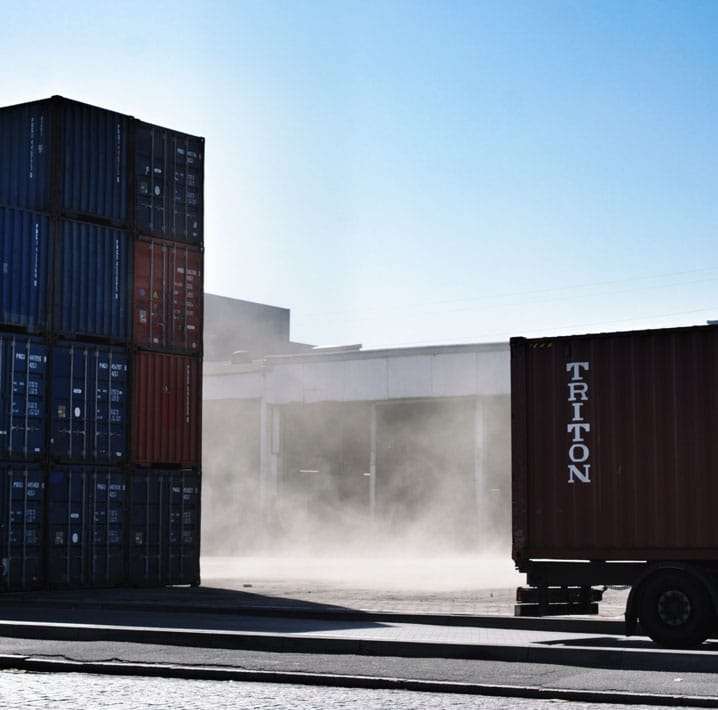
Do you have a lot of stuff to move?
Check: Best Moving Containers
When it’s time to move your belongings out of temporary storage, you should follow these steps:
Temporary storage can be a great solution for those who are in between moves or need to store their belongings for a short period of time. By following the tips outlined in this article, you can ensure that your belongings are packed securely and stored properly, making the process of moving in and out of storage as smooth as possible.
Remember to label your boxes, store items in the right order, and avoid storing hazardous or perishable items. Also, make sure to check with your insurance policy to see if you are covered for storage and to compare prices and services offered by different storage companies before making your choice. With the right preparation and planning, temporary storage can be a great solution to your storage needs.
Check here with your ZIP code for temporary storage between moves near you.
There are several ways in which alternatives to moving boxes may be used while moving. Some of the best movers even suggest some of these for your move. The goal here is to ensure that you can travel without specialized moving boxes.
We understand that some of you are unable to get them on time, or that some of you are unsure of which ones to get. Consequently, we have agreed to provide some basic solutions. Most of them are easy but good options for your relocation that you can use. So, let us check out our quick guide without any further ado!
The idea will be to look for the same reason when it comes to finding a good choice for something. But, if you would, for example, use professional plastic boxes, using basic plastic boxes would be an option. This refers to almost everything you would ever need for your transition. Thus, for instance, you can use:
Something you already have, you can also “make” your moving boxes. For example, by using any small metal box you have, you can build moving jewelry boxes. Just make sure it is secured. Also, you can rely on some of the best offerings for movers if you need any assistance with your transfer.
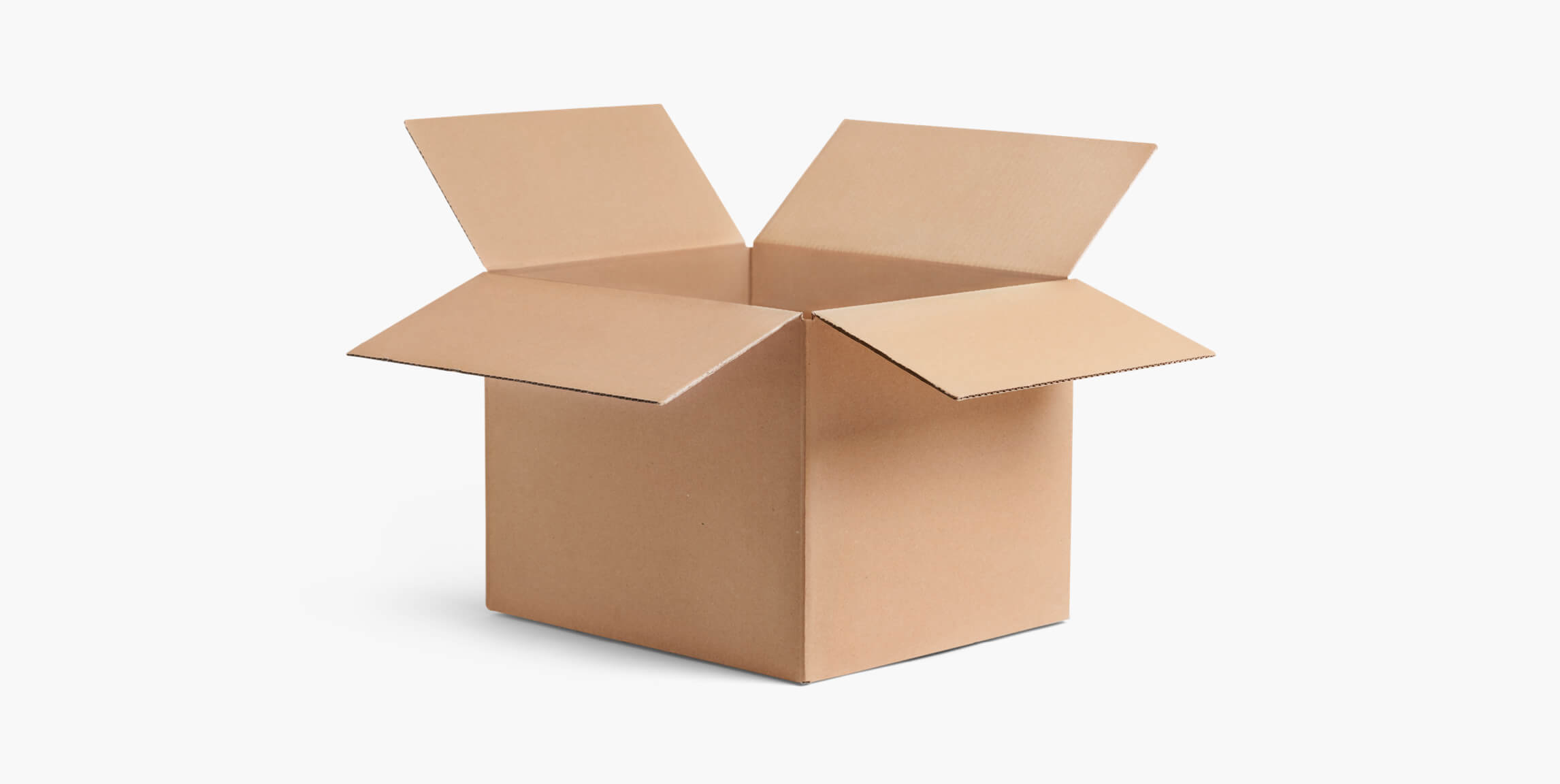
You may store some light items inside, but they are not durable or reliable. Storing paper products would be a smart idea (but not important documents). So, if you need to relocate a heap of newspapers, then plain cardboard boxes will do the trick just fine.
Also Read : How To: Moving Valuables The Right Way
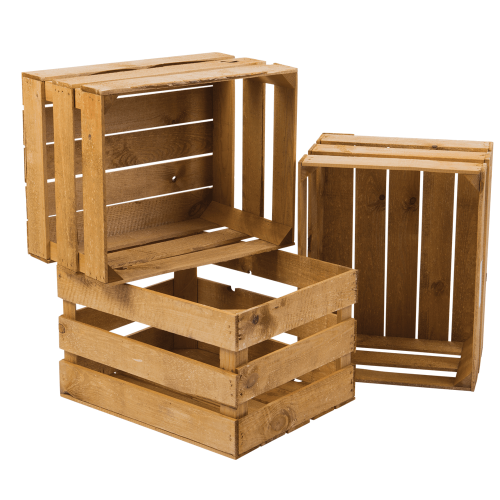
For your books and some slightly heavier objects, you can also use some wooden crates. Just don’t forget that you will need to make sure that your relocation is clean and appropriate. Otherwise, any of your things may be lost/damaged.
To make sure your relocation goes according to schedule, you can also use several techniques. You do not have to pack your clothes for starters, just roll them and stack them inside wooden crates or cardboard boxes. This will give you more room for relocation and you don’t need to spend cash on any professional items. With this process, you can relocate anywhere.
Often, you will need to make sure that you can effectively relocate with them while you are looking for alternatives to moving boxes. There is no point in having alternatives and then struggling to relocate because of that. Therefore, it is not an option, but an utter failure. Therefore, the goal is to ensure that you can travel without any problems with your alternatives.
To do this, you will need assistance from some of the best interstate moving companies you can get and to make sure you start with some good things. For any sort of relocation, those we mentioned in our guide are very decent. Good luck!
Related Articles:






You may be in for a surprise if you utilize your garage to store stuff that you don’t have room for in your home. Moisture, heat, and vermin all wreak havoc on the items that line your garage shelves or are stashed away in their dark recesses. In fact, when placed in the garage, several of those goods may become harmful.
Make sure it’s safe to store another box or unused item in your garage before doing so.
Need assistance storing your items? Call us at (888) 534-2250, We are here to help you!
Never keep the following items in your garage:
Teddy bears can attract pests and become infested, electrical toys can be dangerous if they gather moisture, and crafting tools can melt in excessive temperatures. To be on the safe side, keep your children’s toys inside your home.
Extreme temperatures can quickly harm old devices like computers, laptops, DVD players, game consoles, and televisions, but wetness poses the greatest risk. Electrocution can be caused by any condensation or moisture. Keeping these goods inside or donating them is your choice.
Do you have an extra rug or carpet remnants? They should not be kept in the garage. Mold and mildew can grow on damp clothes, scents can enter the fibers, and bugs can get into the rolled-up lengths. In addition, carpets and rugs that are exposed to direct sunlight will fade over time.
When stored in the garage, don’t anticipate your clothes to fare any better than your rugs. Mold can grow on baby items, winter jackets can develop strange scents, and sweaters can be moth-damaged. Almost every fabric item, even sleeping bags, will succumb to the same fate. Keep them in your house.
In the garage, it’s not just plywood that suffers. Almost every timber is vulnerable to extreme circumstances. As a result, expect some damage to your wood furniture if you store it in your garage. Changes in humidity, for example, will cause the wood to swell and compress, resulting in cracks that you may not be able to repair.
Personal belongings have no place in the garage. Coins can corrode, Toy Cars can rust, and collector editions can mold due to moisture. Vinyl records can distort in the heat, and dirt can ruin autographed posters. It’s much easier to steal these valuables from your garage than from a secure location within your house.
Related
What are the Qualities of a Good Storage Facility
Guide to Renting a Storage Unit for First-Timers
Renting Storage When Moving: Do You Really Need It?
Books, like photos, struggle to survive the humidity and dampness of a garage. Their pages bend and their spines distort as time passes. In addition, silverfish and other insects in your garage will devour the glue that holds books together. Store periodicals and vital paperwork within your home in addition to books and photographs.
Who doesn’t have a garage full of wood scraps? It is typically not a problem for a short-term project. Wood, on the other hand, can warp over time due to changes in temperature and humidity. If you don’t have anywhere else to put your scraps, the garage will suffice. Just keep in mind that by the time you need it, the wood may have warped and become worthless.
Pet food, like human food, should be stored only in your garage. Although the temperature has no effect on pet food in the same way that it does on human food, rats and other pests can readily eat through the bags in which it is often packaged. Keep it in a firmly sealed plastic or metal container if you have to store it in the garage.
Photographs should never be kept in the garage. Heat and moisture can produce mildew on the photographs. The photo’s margins may curl as a result of the garage’s harsh conditions. Locate a safe spot to store them inside, and make sure to scan any originals.
Food of any kind should never be stored in your garage. Rats and other pests are attracted to fresh food, and they can readily break into bags and cardboard boxes. The situation isn’t any better with canned products. Temperature changes can cause bacteria to thrive within cans, and humidity can rust the metal of cans and metal lids on glass jars. As a result, the rust might create a chemical reaction in the food, rendering it unsafe to eat.
Alcoholic beverages such as beer, wine, and other alcoholic beverages should not be kept in the garage. Heat and light can change the taste of wine and even transform it into vinegar. Instead, provide space for them within your home in a dark, cool location.
Because propane tanks might leak, storing them in your garage poses a risk. When a propane tank is leaking, it just takes one spark to start a fire. Propane tanks should be kept in a well-ventilated place away from your home.
In piles of stacked wood, pests such as spiders and termites establish their home. Those pests can readily penetrate your home area if that wood is stored in your garage. Keep firewood at least 20 feet away from your house to avoid an infestation.
So, what can you do if you have a lot of stuff that shouldn’t go in the garage but don’t have enough room in your house to put it? Renting a climate-controlled storage facility is one option. These units are usually found inside a structure that maintains the temperature and provides shelter from the elements. Keeping your belongings in a climate-controlled container assures you that they will arrive in the best possible shape.
Related Articles:

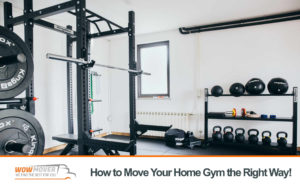


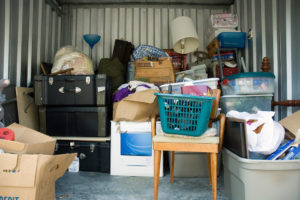
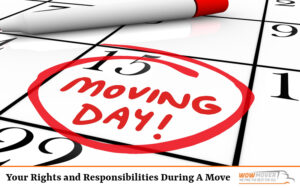
It might be stressful in the days leading up to your move. The last thing you want to worry about is not having enough boxes for all of your belongings–and yes, you will require more than the standard box sizes.
We’ve chosen five different sizes of moving boxes that you’ll need to pack your belongings swiftly and safely.
Also known as small boxes. This cardboard box is ideal for transporting smaller, heavier things. This box can hold everything from silverware to books. It will be easier for you and your mover if you pack the majority of your belongings into 1.5 cubic foot boxes.
These boxes are also ideal for transporting fragile objects. This size is ideal for fragile things that do not require a large box. Make sure you pack these boxes with considerable thought and care, regardless of their size. If you’re going to use these for the majority of your fragile things, make sure to fill any gaps with packing paper or bubble wrap.
The 1.5 cubic foot box is easy to stack, making loading a moving truck simple. The smallest of all box sizes. Tetris is amusing, but not when it’s played with moving boxes.
This is without a doubt the most adaptable moving box. The Goldilocks of moving boxes is a 3.0 cubic foot box. It can hold a wide range of items, including lights, kitchen utensils, and even pots and pans. It is often called medium boxes.
Because the 3.0 cubic foot box is the most commonly utilized size for moving, you should have several on hand. It’ll become your catch-all container, and it’ll quickly fill up with objects that don’t seem to belong anywhere else. The Home Depot is the place to go if you need a few of these boxes.
Make sure these boxes are well-organized and that the contents you pack in them are well-protected. It’s easy to overpack and end up with a jumble of goods in these boxes.
The most difficult room to pack and move is the kitchen. It can be a difficult process with so many breakables. Using a dish packing box, on the other hand, decreases the likelihood of goods breaking and simplifies the process of packing up your kitchen.
These boxes are made to be used with dividers in order to create sections and provide additional protection. The dividers allow you to organize the box however you wish and safeguard glassware and dishes from each other. U-Haul sells dish packs, which are also known as dish barrel boxes.
Dish pack boxes feature built-in handles for easier transport. Keep in mind that these boxes can quickly fill up and become hefty. Check the weight of the box as you stuff it to ensure it is not too heavy for you to carry.
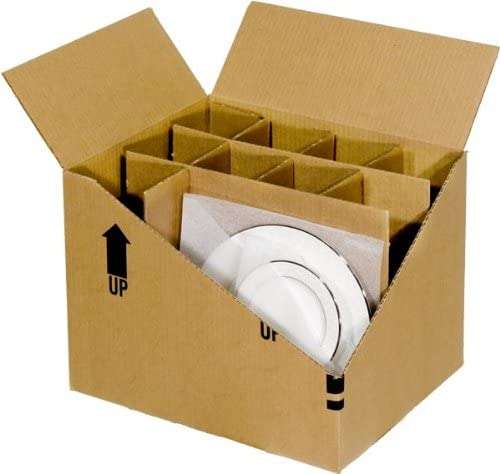
Your beautiful outfits have no place crumpled at the bottom of a box. Wardrobe boxes are used to transport clothes on hangers. That means you won’t have to worry about your blouses or suits getting wrinkled or destroyed! These bins include a pole to help you hang and organize your clothes.
Wardrobe boxes are available in a variety of sizes to fit clothing of various lengths. After you’ve finished moving, you may easily transfer your belongings to the closet. Staples is a great place to pick these up (they even come in bundles of 5). Wardrobe boxes can also be utilized for drapes, curtains, or tapestries.
Picture boxes are wonderful for so much more than just images! Frames, mirrors, artwork, And other hanging wall decorations, as well as a glass tabletop, are all readily packed. Picture boxes are unique in that they are cut to size, which means you may receive the exact size you need, reducing the risk of damage. There is no such thing as a one-size-fits-all moving box.
These are one of the most useful sizes for transporting fragile goods around the house. Items that fit into this box are usually delicate and vulnerable to breakage during a move. Knowing that you can cram all of your belongings into one will give you peace of mind. Picture boxes are available from Amazon and U-Haul.
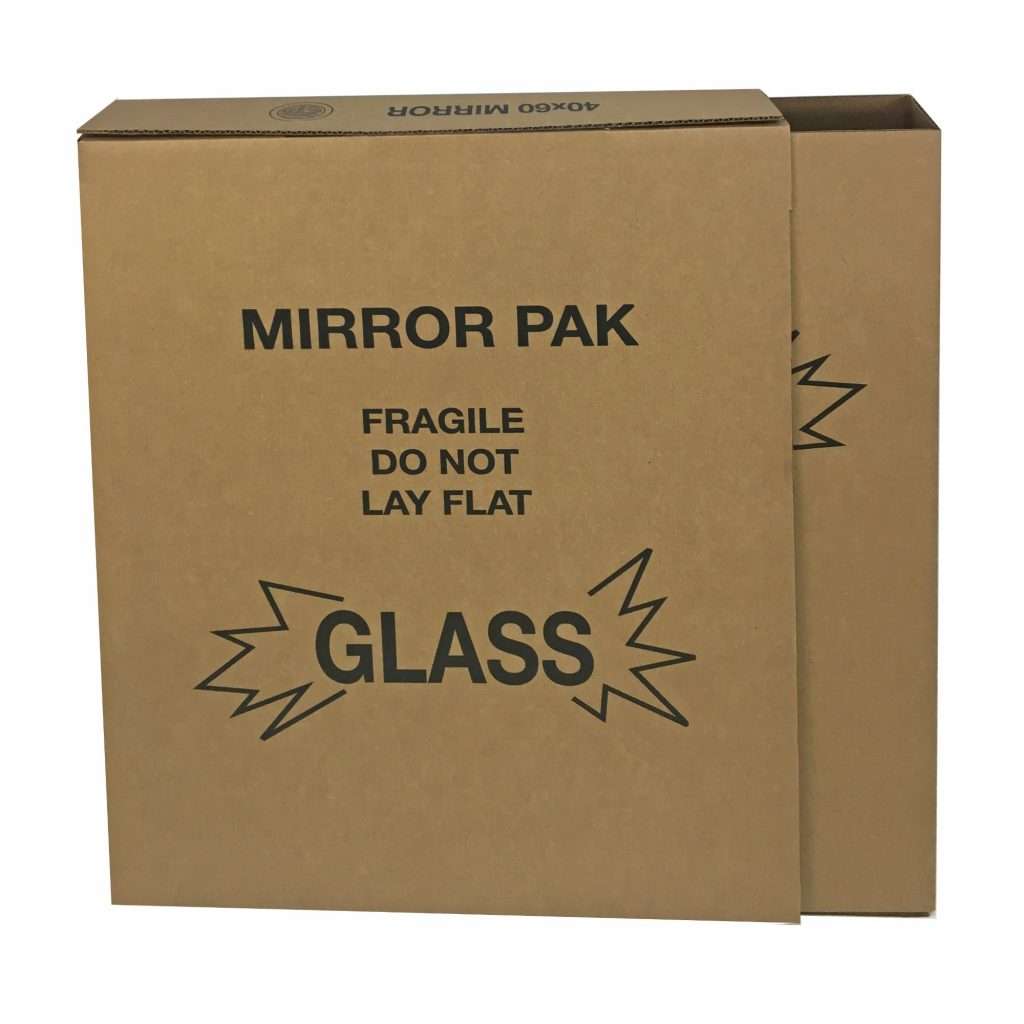
Remember to use cushioning to protect your items when packaging them using these boxes. To protect the edges and corners of objects, we recommend rolling up some packing paper and forming “bumpers.”
Different box sizes have different purposes. It is made to simplify packing and protect your stuff from damage. But before buying these boxes, try to find alternatives to save more money. For example, you can use beer boxes to pack glasses, and old TV boxes can be used as mirrors or artwork boxes. You just have to be resourceful and inventive.
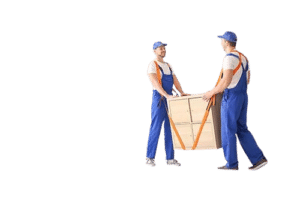




How to Get Moving Boxes for Your Upcoming Move? : Planning for an Interstate Move: If you are truly strict on spending and need to spare some dollars, there are some incredible approaches to getting free boxes for your move. Purchasing boxes for your move isn’t cheap. The bill alone for purchasing new boxes ranges from $10-100 depending on how much you need.
There are quite a couple of spots that are probably going to give you free boxes of different sizes. In the event that you are close to a supermarket, at that point, that is typically your best spot to begin. Go to the grocery department and inquire as to whether there are any extra boxes that you can have.
The supermarkets, in particular, just like spots like Walmart, Target, and so forth, will all generally have an enormous stockpile of empty boxes from stock shipments. The high traffic and deals in these sorts of stores imply that they continue emptying huge numbers of boxes day and night.
A couple of other incredible spots to get free boxes are stores like Sears and Best Buy.
If you are a decent organizer and are beginning to get ready for your move early, at that point you can begin to collect free moving boxes in different ways. Christmas, occasions, birthday celebrations, and shopping ends of the week are likewise incredible occasions for collecting boxes.
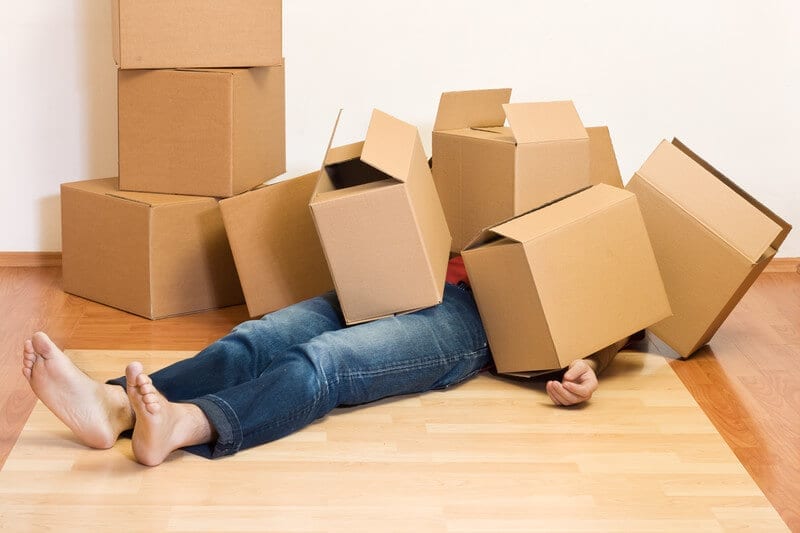
Ask your loved ones to spare you any containers they don’t need, like shoe boxes, appliance boxes, or whatever else they may have. After Holidays like Christmas, there is a staggering amount of boxes lying around people’s houses and along the lanes holding on to be gotten by the junk man. Go around and inquire as to whether it’s alright to get some as long as they are in great shape.
Tip: Remember when you’re done unloading after your move , give it to another person that in need of free moving boxes.
Related Articles:





